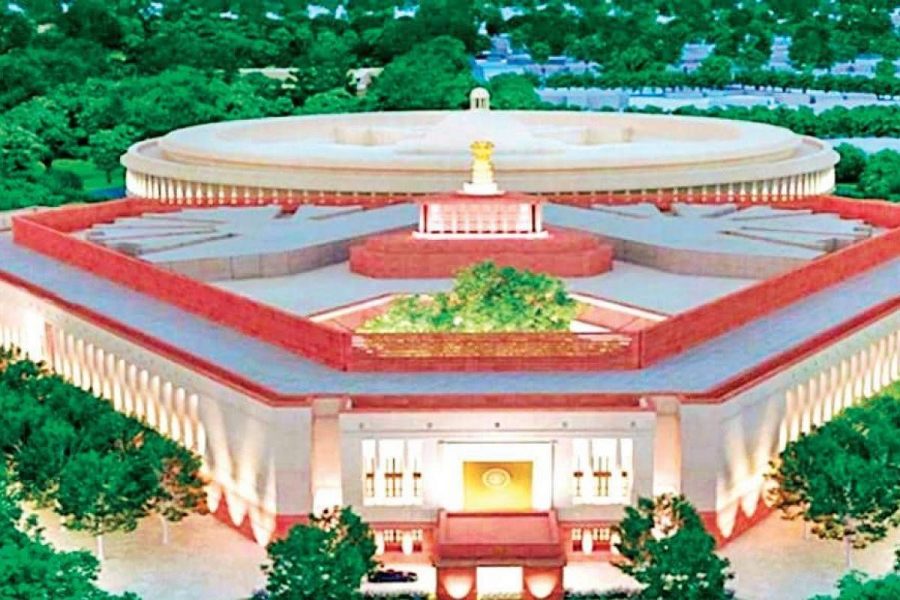
New Parliament building’s budget overshoots by ₹282Cr; to be ready by Oct

The estimated project cost of the new Parliament building may shoot up by more than ₹200 crore due to higher expenditure on steel, electronics and other works, and the Central Public Works Department (CPWD) is expected to get the Lok Sabha Secretariat’s approval for the extra cost, sources said.
The Parliament building, the highlight of the government’s flagship Central Vista project, was estimated to cost ₹977 crore. It is estimated the project will now cost another ₹282 crore, an overshot of 29 per cent.
The 29 per cent hike comes more than a year after the groundbreaking ceremony, which took place in December 2020. Forty per cent of the work on the building has been completed by Tata Projects, which is executing the project.
Earlier in January, CPWD, the nodal agency for the construction of new Parliament building, had sought in-principal approval of the LS Secretariat for the cost enhancement, sources told PTI.
The government had set October 2022 deadline for the building and aimed to hold the winter session this year in the new building.
Also read: Central Vista: Bids sought for ‘Executive Enclave’, includes new PM office, India House
The building schedule, however, remains the same, sources said. The proposed four-storey building, spread over 13 acres—a stone’s throw from Rashtrapati Bhavan—was initially expected to be finished before the country’s 75th Independence Day this year. Later, the deadline was extended to October.
To ensure the project doesn’t miss its deadline, there has been no restriction on construction, which is in place for other projects, on account of COVID-19.
Sources said that the CPWD’s reasons behind the expected rise includes higher cost of steel as the building is now being constructed as per the norms of seismic zone 5.
The cost on electronics is also expected to rise as provisions are also being made for a modern audio-visual system, including tablets on the tables of MPs in both Houses of Parliament, CPWD told sources.
The restrictions were removed after the government told the Supreme Court that the construction of the Central Vista project is a work of national importance.
The government says the need for the new Parliament building was felt as the existing British-era structure was found lackingin modern info-tech facilities and offices for MPs.
Many MPS have pointed out that the building—opened in 1927—is cramped. It has reached its capacity in terms of seating arrangements in the Lok Sabha and the Rajya Sabha halls.
The legislators have also pointed out that the building is neither earthquake proof nor has safe from fire accidents.
The new building is expected to seat 888 members in the Lok Sabha Chamber with an option to increase the capacity to 1,224 members during joint sessions.
The Rajya Sabha chamber will have a seating capacity for 384 members keeping in mind future requirements.
Also read: ‘We give you 24 hours’: SC criticises Delhi, Centre over pollution crisis
The new building also promises to showcase the country’s glorious heritage, with contributions from artisans and sculptors from across the country.
Central Vista
The redevelopment of the Central Vista, the nation’s power corridor, envisages a new Parliament building, a common central secretariat, revamping of the three-km Rajpath from the Rashtrapati Bhavan to the India Gate, a new office and a residence for the prime minister, and a new Vice-President Enclave.
According to the CPWD, Central Vista houses only 22 of the 51 ministries of the Centre. In some cases, a ministry has offices split between different buildings. This scattering of ministry offices across Delhi hampers the efficiency of administration and increases operational costs and energy usage.
The consolidated common central secretariat will have modern offices and facilities for all the 51 ministries.

